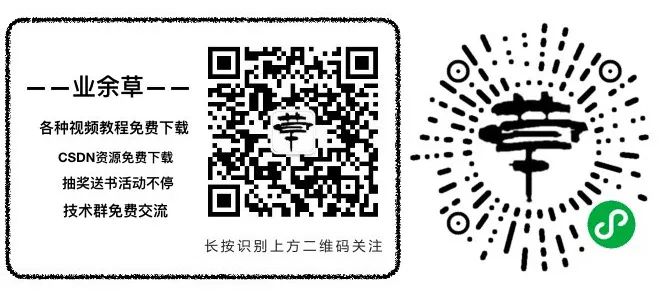本博客日IP超过2000,PV 3000 左右,急需赞助商。
极客时间所有课程通过我的二维码购买后返现24元微信红包,请加博主新的微信号:xttblog2,之前的微信号好友位已满,备注:返现
受密码保护的文章请关注“业余草”公众号,回复关键字“0”获得密码
所有面试题(java、前端、数据库、springboot等)一网打尽,请关注文末小程序

腾讯云】1核2G5M轻量应用服务器50元首年,高性价比,助您轻松上云
还记得我在这篇文章《SpringBoot + spring-security-oauth2 实现仿微信,QQ,微博等授权认证》中实现的漂亮的授权页面吗?spring-security-oauth2 中默认的授权页面太丑了,基本没人会使用。我们都希望能定制化这个页面,像微信授权页面那样,简单美观。本文,我们就一起来一个定制化 OAuth2 中的授权页面。

上面这个授权页面,图标,内容都可以高度定制化。
所有的定制化思路都是,找到默认的实现,然后重写默认的实现即可。
默认的授权页面在 org.springframework.security.oauth2.provider.endpoint.AuthorizationEndpoint 中有定义。代码如下:
private String userApprovalPage = "forward:/oauth/confirm_access"; private String errorPage = "forward:/oauth/error";
然后,我们只需要把我们定制的的授权页面和加载的数据通过 userApprovalPage 和 errorPage 展示即可。
@Configuration
@EnableAuthorizationServer
public class AuthorizationServerConfiguration extends
AuthorizationServerConfigurerAdapter {
@Autowired
private AuthorizationEndpoint authorizationEndpoint;
@PostConstruct
public void init() {
authorizationEndpoint.setUserApprovalPage("forward:/oauth/approvale/confirm");
authorizationEndpoint.setErrorPage("forward:/oauth/approvale/error");
}
}
在定义一个 OAuthController,注意这个 Controller 必须要有 @SessionAttributes({ "authorizationRequest" }) 注解。
@Controller
@SessionAttributes({ "authorizationRequest" })
public class OAuthController {
@RequestMapping({ "/oauth/approvale/confirm" })
public String getAccessConfirmation(Map<String, Object> model,
HttpServletRequest request) throws Exception {
@SuppressWarnings("unchecked")
Map<String, String> scopes = (Map<String, String>) (model.containsKey("scopes") ?
model.get("scopes") : request.getAttribute("scopes"));
List<String> scopeList = new ArrayList<String>();
for (String scope : scopes.keySet()) {
scopeList.add(scope);
}
model.put("scopeList", scopeList);
return "oauth_approval";
}
@RequestMapping({ "/oauth/approvale/error" })
public String handleError(Map<String, Object> model, HttpServletRequest request) {
Object error = request.getAttribute("error");
String errorSummary;
if (error instanceof OAuth2Exception) {
OAuth2Exception oauthError = (OAuth2Exception) error;
errorSummary = HtmlUtils.htmlEscape(oauthError.getSummary());
} else {
errorSummary = "Unknown error";
}
model.put("errorSummary", errorSummary);
return "oauth_error";
}
}
默认的 /oauth/confirm_access 和 /oauth/error 两个请求地址的代码分别在 org.springframework.security.oauth2.provider.endpoint.WhitelabelApprovalEndpoint 和 org.springframework.security.oauth2.provider.endpoint.WhitelabelErrorEndpoint 中。代码分别如下;
// WhitelabelApprovalEndpoint 类
@RequestMapping({"/oauth/confirm_access"})
public ModelAndView getAccessConfirmation(Map<String, Object> model,
HttpServletRequest request) throws Exception {
// 业余草省略处理逻辑
}
// WhitelabelErrorEndpoint 类
@RequestMapping({"/oauth/error"})
public ModelAndView handleError(HttpServletRequest request) {
// 业余草省略处理逻辑
}
我们的 oauth_approval.html 页面的代码如下:
<!DOCTYPE html>
<html>
<head>
<meta charset="UTF-8">
<title>授权登录</title>
<meta name="viewport" content="initial-scale=1, maximum-scale=1, user-scalable=no"/>
<link rel="stylesheet" href="//i.gtimg.cn/vipstyle/frozenui/2.0.0/css/frozen.css"/>
<style>
.block{
position: relative;
}
.ui-notice{
position: relative;
padding:20px 15px;
box-sizing: border-box;
}
.ui-notice p{
color:#333;
font-weight: 600;
}
.ui-btn-primary{
background-color: #02cd93;
border-color:#02cd93;;
}
.ui-notice-btn{
padding:50px 0px 15px;
}
</style>
</head>
<body>
<div class="block">
<section class="ui-notice">
<i class="icon icon-notice"></i>
<p>是否授权:<span th:text="${session.authorizationRequest.clientId}">clientId</span></p>
<div class="ui-notice-btn">
<form id='confirmationForm' name='confirmationForm' action="/auth/oauth/authorize" method='post'>
<input name='user_oauth_approval' value='true' type='hidden'/>
<!--写好授权访问领域-->
<input th:name="${s}" value="true" type="hidden" th:each="s : ${scopeList}"/>
<input class="ui-btn-primary ui-btn-lg ui-btn-primary" name='authorize' value='授权' type='submit'/>
<!-- <input type="radio" name="scope.user_info" value="true">授权</input>
<input type="radio" name="scope.user_info" value="false" checked>取消</input> -->
</form>
</div>
</section>
</div>
</body>
</html>
剩下的一个 oauth_error.html 取消授权这个页面,我就不贴了。自己去实现吧。关于自定义登录页面,我们下章再说。

最后,欢迎关注我的个人微信公众号:业余草(yyucao)!可加作者微信号:xttblog2。备注:“1”,添加博主微信拉你进微信群。备注错误不会同意好友申请。再次感谢您的关注!后续有精彩内容会第一时间发给您!原创文章投稿请发送至532009913@qq.com邮箱。商务合作也可添加作者微信进行联系!
本文原文出处:业余草: » spring-security-oauth2 使用 AuthorizationEndpoint 自定义授权页面
